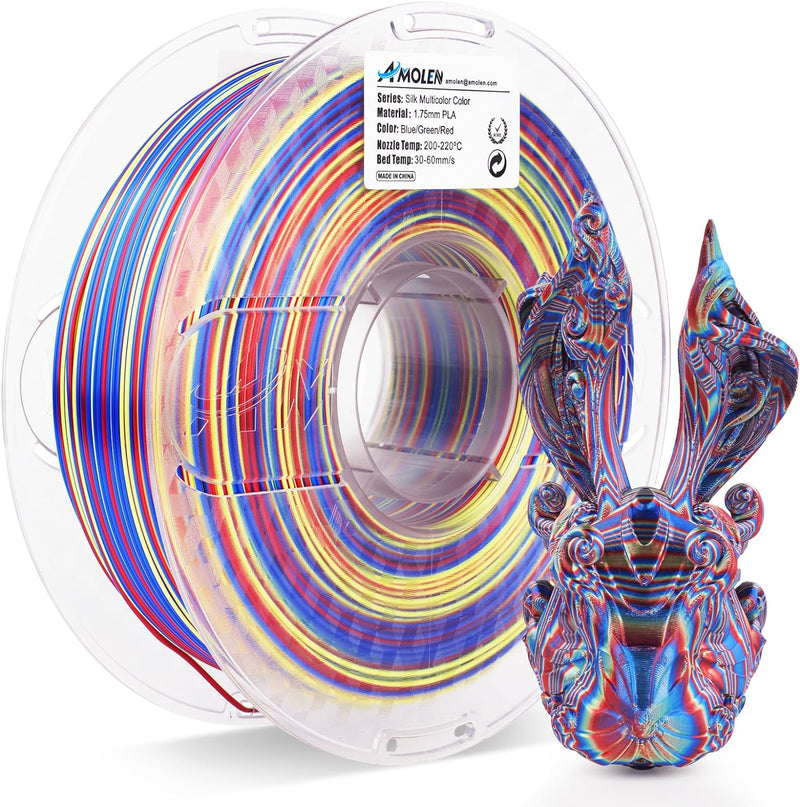Unveiling the Secrets of Silk PLA: Discover What Users Are Raving About!
In the dynamic world of 3D printing, silk PLA filament has emerged as a favorite among enthusiasts and professionals alike, capturing attention with its unique characteristics and stunning aesthetics. Unlike traditional PLA, silk PLA gives prints a glossy finish, elevating the visual appeal of any project. This article aims to delve into the intricate details of silk PLA filament, exploring its properties, performance metrics, and the varied experiences shared by users. Whether you're a seasoned 3D printing expert or a newcomer eager to explore new materials, this comprehensive review will equip you with valuable insights to make informed decisions in your printing journey.

What is Silk PLA Filament?
Silk PLA filament is a specialized type of polylactic acid (PLA) filament that incorporates additives to enhance its visual and physical properties. While standard PLA is known for its ease of use and eco-friendly nature, silk PLA takes it a step further by providing a smooth, glossy finish that mimics the appearance of silk. This unique filament is made from renewable resources, making it a popular choice for environmentally conscious makers. The sheen of silk PLA sets it apart from its standard counterpart, offering a luxurious look to printed objects, making them particularly appealing for decorative items, prototypes, and even functional prints that benefit from an eye-catching finish. The combination of aesthetic appeal and user-friendliness makes silk PLA a go-to choice for many 3D printing projects.
Properties of Silk PLA Filament
Silk PLA filament boasts several key properties that contribute to its popularity among 3D printing enthusiasts. One of the standout features is its lower melting point, which typically ranges between 180°C to 220°C. This allows for easier printing compared to other filaments that require higher temperatures. Additionally, silk PLA exhibits a good balance between strength and flexibility, making it suitable for a variety of applications without compromising on durability. Users often report that silk PLA prints have a smooth finish and vibrant colors, enhancing the overall visual quality of the final product. Furthermore, the filament is less prone to warping, which is a crucial factor for achieving accurate and detailed prints. However, it's important to note that while silk PLA is user-friendly, achieving optimal results may require specific printer settings and techniques.
User Experiences with Silk PLA Filament
User feedback on silk PLA filament has been overwhelmingly positive, particularly regarding its aesthetic qualities. Many users rave about the glossy finish, which gives their prints a high-end look that stands out. For instance, a friend who dabbles in 3D printing shared how impressed he was with the silk PLA he used for a decorative vase; the sheen made it look almost like ceramic. However, some users have pointed out a few drawbacks. While silk PLA is easy to print, it can be less forgiving when it comes to fine details compared to other filaments. Some have experienced minor stringing issues, particularly on complex prints. Despite these challenges, the overall consensus is that the stunning finish and ease of use make silk PLA a worthy addition to any 3D printing enthusiast's toolkit.
Performance in Different 3D Printing Scenarios
When it comes to performance, silk PLA filament shines in various 3D printing scenarios. Many users have found that it performs well at higher printing speeds, which can significantly reduce the time needed for larger projects. However, it's essential to find the right balance; too high of a speed can lead to reduced print quality. Temperature settings also play a critical role in achieving the best results—most users recommend starting at around 200°C and adjusting based on results. Additionally, silk PLA is compatible with a variety of 3D printers, including both FDM and some more advanced models. Whether you're printing intricate designs or larger objects, silk PLA's versatility allows it to adapt well to different project requirements. Personal experiences shared by fellow makers emphasize the filament's reliability across various printing conditions, making it a favorite for both hobbyists and professionals.
Conclusion and Recommendations
In summary, silk PLA filament offers a unique blend of aesthetic appeal, ease of use, and versatility, making it an attractive option for a wide range of 3D printing projects. Users have praised its glossy finish and smooth prints, which elevate the overall quality of their creations. However, potential users should be mindful of the minor challenges that may arise, such as stringing and the need for careful temperature management. For those considering silk PLA for their 3D printing needs, it's advisable to experiment with settings and techniques to fully harness the filament's capabilities, ensuring that your prints come out as beautifully as envisioned.
Insights on User Experiences with Silk PLA
Ultimately, the journey into the world of silk PLA filament is enriched by user experiences that highlight both the advantages and potential pitfalls of this exciting material. By understanding the properties and performance dynamics of silk PLA, users can make informed choices tailored to their specific printing needs. As with any filament, personal experimentation and feedback are crucial in mastering its use. Embrace the silk PLA adventure, and let your creativity flow as you explore the endless possibilities this filament offers!








